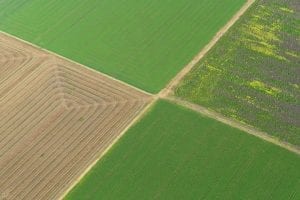
As part of the State of Ohio Operating Budget signed by Governor John Kasich in June 2017, one of the items House Bill (HB) 49 included was changes to how farmland is valued under Ohio’s Current Agriculture Use Value (CAUV) program. The CAUV was designed to estimate a value of a property by only considering its use for agriculture, instead of its “best” potential use (such as development). As a rule, this results in a lower tax bill for farm owners as the land is usually valued below its market value, especially in areas where farmland is in demand for development purposes. The purpose of the law is to encourage farmland preservation and discourage converting the land to for development purposes.
HB 49 took effect in September of 2017 and will phase in over six years. It makes changes to the CAUV formula and is geared to lower the CAUV land values. Nice for the farm owners, but this will likely have a ripple effect on others. In fact, policy experts believe that these CAUV changes will result in estimate values decrease by 30 percent statewide. And according to the Legislative Service Commission, this would cause a loss of $4 million in 2017 to school districts and local governments. Such losses would grow each year until 2022, when each would lose $14 million.
Read Also: GASB 68: Keep The Good Times Rolling
Additionally, some industry experts believe that cutting taxes for farmers will result in tax increases for residential taxpayers. This is due to the fact that under some of Ohio’s local taxes, reductions of some taxes are made up with increases for other taxpayers. There is a portion of local levies that doesn’t work that way, so a reduction in agricultural property values because of a different CAUV formula can mean revenue losses for schools and other taxing authorities. It can also impact the state’s school funding formula, which can increase state aid to school districts with lower property values because of the CAUV decreases and reduce aid to districts with little or no agricultural property. And as far as school funding goes, it too can be impacted as the amount these farm landowners pay toward school levies and millage will go down because tax rates are based on the CAUV value. If the property value goes down, so does the amount of their tax rate. So while the agricultural interests have been satisfied with its CAUV reductions, it is at the expense of schools and residential taxpayers. This means taxes will go up on all other property in the district, including residential property.
An analysis by Dr. Howard Fleeter, a consultant for the Ohio Education Policy Institute, explained: “It is difficult to remember another piece of legislation that has caused such a large tax increase for residential taxpayers.”
Fleeter’s report shows increases in tax rates, property taxes and millage increases. The analysis also states the statewide average CAUV value is less than 55 percent of market value.
It’s been estimated that a $60 million property tax shift, from agriculture lands to residential areas, could affect homeowners disproportionately, while also reducing school districts’ funding. The guess is that residents will be asked for more tax increases through levies to make up for lost money. Decreases in agricultural values will mean that tax rates will have to increase in order to generate the necessary revenue.
Several organizations representing public school boards of education, superintendents, and other school business officials from around the state have voiced their concerns regarding the CAUV under HB 49, but nothing has changed. For now, it isn’t exactly a question of if property taxes will be affected, but how much will be affected.
Email Rea & Associates to learn more about HB 49 or to speak with a member of our government services team.
By Chad Welty, CPA (Medina office)
Looking for more helpful insight into concerns that could impact your district or municipality? Check out these articles:
Are Your Policies & Procedures Out Of Date?
Podcast: Protect Your Organization From Mistakes, Fraud And More With Internal Controls
